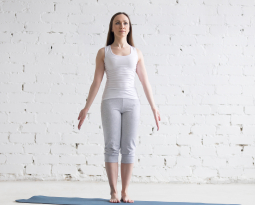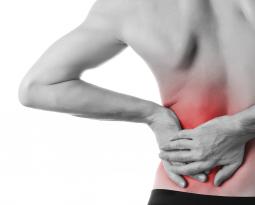
Back to School Posture DON’Ts
To design a healthy change in societal patterns, it begins with changing the lifestyle habits of children. As children develop they are influenced by the norms to which they are exposed. By educating children about the importance of proper postural design, societal shifts toward a healthier population are possible. The new “normal” should be children learning how to interact with technology in a way that promotes healthy body structure instead of deteriorating their postural framework.
Children thrive when they have better posture. Their postural presentation during the developmental stages of life predicts their ability to grow and develop with less pain, have more bodily confidence, and to perform better at school.
How Children Can Improve Postural Design
Lifestyle habits for children are highly dependent upon how they hold their body upright while at school. Incorrect postural patterns that begin during the school-age years of life are more likely to persist as unhealthy lifestyle habits into adulthood.
Postural training helps children prevent painful musculoskeletal conditions that are common during the developmental stages, such as neck and back pain.
Posture DONT’S
1. DON’T Sit with Slumped Posture
Children remain seated for approximately 6 hours per day at school. As children experience the most changes with their growth and development during the scholastic years of age, proper posture while seated is thus critically important. While seated, the amount of weight on the lower back increases greatly when slouching. Slouching forward with the shoulders also causes a decreased respiratory capacity for children.
How to teach children proper postural technique:
Children often don’t realize that they are slouching; they are just trying to sit comfortably. However, instead of slouching the spine to find a comfortable position, it is better to teach children proper postural hygiene at a young age so they can learn to be comfortable without sitting improperly. A slouched spine can cause postural imbalances and spinal degeneration over time. In fact, many adults experience back pain later in life due to improper postural habits as children. “Sitting up straight” then, is not a recommendation solely for cosmetic purposes, but to protect the spine from injury and early onset degeneration.
Proper Posture While Seated at School
• The shoulders should be aligned with the hips. Roll the shoulders up and back to open the chest and straighten the spine
• Contract the abdominal muscles to support the lower back
• Pull the chin back and avoid looking down for long periods of time. When reading, pick up the book to eye level and avoid bending over and resting arms or shoulders on the desk
• Both feet should be placed on the floor, the knees should form a 90 degree angle from the hips to the ankles
• If the chair is too high and the feet do not reach the ground, place something under the feet so they can rest comfortably
2. DON’T Carry a Heavy Backpack
Did you know that your child’s backpack should not exceed 10% of their body weight? In fact, 61.4% of children are presented with backpacks that weigh more than 10% of their body weight.
When the backpack exceeds this weight, the body that affects the child’s posture and biomechanical development makes physical compensations. For example, when the weight of the backpack exceeds 15% of the child’s body weight, the child naturally leans forward.
How to teach children how to properly wear a backpack:
Over time this causes strain of the musculature of the low back. Also, when backpacks exceed 15% of the child’s body weight, they experience an increased frequency of short breaths due to the overloaded weight on their back. When backpack straps are only worn over one shoulder, another problem occurs. Due to the uneven weight distribution, children present with postural abnormalities of the head and neck affecting their spinal development.
Tips of How to Wear a Backpack Correctly
• Always carry backpacks over two shoulders
• Pack the heaviest books or items in the backpack closest to the body
• Always carry backpacks close to the body
• Buy smaller backpacks to prevent carrying too many items at a time
• Do not wear backpacks too low (hanging below the hips)
• Backpack weight should not exceed 5-10% of the body weight of the child
3. DON’T Skip Your Yearly Posture Evaluation
All children starting at the age of 6 years old should have a yearly posture evaluation performed with Posture Imaging. By monitoring your child’s posture throughout their developmental stages, postural distortion patterns can be identified early and corrected before they become chronic and cause spinal degeneration. Proper posture is a fundamental aspect of a child’s health that cannot be overlooked. Their posture is the structural framework of their body, they will their posture forever, it will be with them everywhere they go!
How To Schedule A Posture Evaluation
Yearly posture evaluations are the best practice for preventing serious postural decline. To find a Certified Posture Expert in your area, contact the American Posture Institute and we will gladly put you in contact with a Certified Posture Expert in your area.
Remember, it’s Posture by Design, Not by Circumstance.
References:
1) Brackley, H, & Stevenson, J. (2004). Are Children’s Backpack Weight Limits Enough? A critical review of the relevant literature. Spine, 29, 2184 – 2190.
2) Goodgold, S. & Nielsen D. (2003). Effectiveness of a School-Based Backpack Health Promotion Program: Backpack Intelligence. Work 2, 113 – 123
3) Paloma Rodríguez-Oviedo et al, 2012
4) Reneman, M., Poels, B., Geertzen, J., Dijkstra, P. (2006). Back Packs and Back Pain in Children: Biomedical or Biopsychosocial model. Disability and Rehabilitation, 28(20) 1293-1297.
















Hi. Is there a posture expert located near Mesa, AZ?